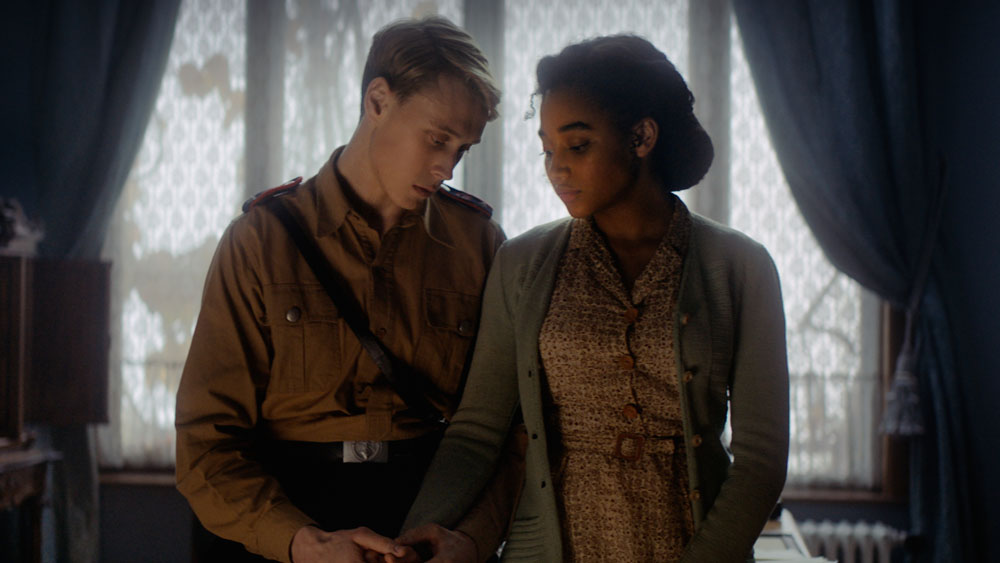Amandla Stenberg Defends Her Upcoming Controversial Holocaust Film ‘Where Hands Touch’
By Elizabeth Wagmeister
LOS ANGELES (Variety.com) – Amandla Stenberg’s upcoming film “Where Hands Touch,” which is set during the Holocaust, has raised many eyebrows ahead of its release.
The romantic period piece from filmmaker Amma Asante revolves around the romance between two German teenagers — Stenberg as a biracial young woman coming of age during the time of the Holocaust and George MacKay as a member of the Hitler Youth — and when Variety posted a first look image from the film back in early 2017, social media users criticized the drama for romanticizing Nazis.
Asante quickly took to social media to defend her project and clarify her purpose, writing, “This film does not romanticize Nazis in any way.” The writer and director explained that the film is a passion project of hers because she wants to shine a light on the existence of “Rhineland bastards,” the German children of color who grew up under Hitler’s rule.
Stenberg — who also stars in “The Hate U Give,” which is premiering at the Toronto International Film Festival along with “Where Hands Touch” — was interested in starring in the Holocaust movie because she has wanted to work with Asante since her 2013 film “Belle,” which is the first time Stenberg says she saw representation of a historical biracial experience on screen.
“I think something that [Asante] is the most fascinated by and thinks is the most profound is the intersection of identity and how it’s changed by our environments and our governments and by our peers and our families, and that was her intention with ‘Where Hands Touch,’” Stenberg tells Variety during a recent interview for her Young Hollywood cover. “She spent time writing over the past 12 years and it’s her baby and her passion project…She always does what she does with a deep and open heart towards how she can portray identity and how through portraying identity throughout history, how she can draw comparisons and hopefully teach lessons about what’s happening now.”
Like Asante, Stenberg was interested in helping to share the history of the Rhineland bastards because, she says, “We lack a range of the experience of black people throughout history, let alone a story about someone who is biracial.”
“People don’t really know that biracial children existed then,” Stenberg says. “These biracial children where the children of French soldiers and German women who had fallen in love during World War I.”
Speaking about her character, Stenberg explains, “Leyna is a child who is walking a very dangerous tight rope. She is not living the Jewish experience. She is experiencing racism and persecution, which ends up leading to her being sent to a concentration camp where she lives an experience parallel to that of Romani people or disabled people or mentally ill people or outcasts — those who were not Jewish and were not sent to extermination camps, but were persecuted and forced to work…that’s where those biracial children were sent at that time.”
Stenberg understands that the subject matter may be perceived as controversial, but she defends the film’s intent.
“I think it’s challenging for people to conceive of a story about the Holocaust that is not centered around the Jewish experience, but the experience of someone else,” Stenberg says. “But I think what the movie does really beautifully is it demonstrates what happens with these tricky intersections of identity and how we still continue to be human and love and be loved, despite that.”

